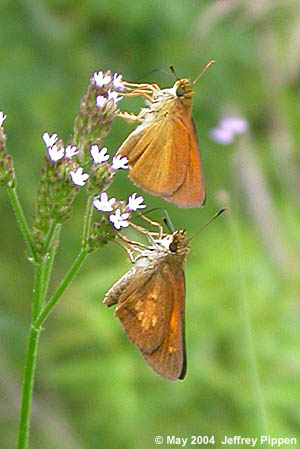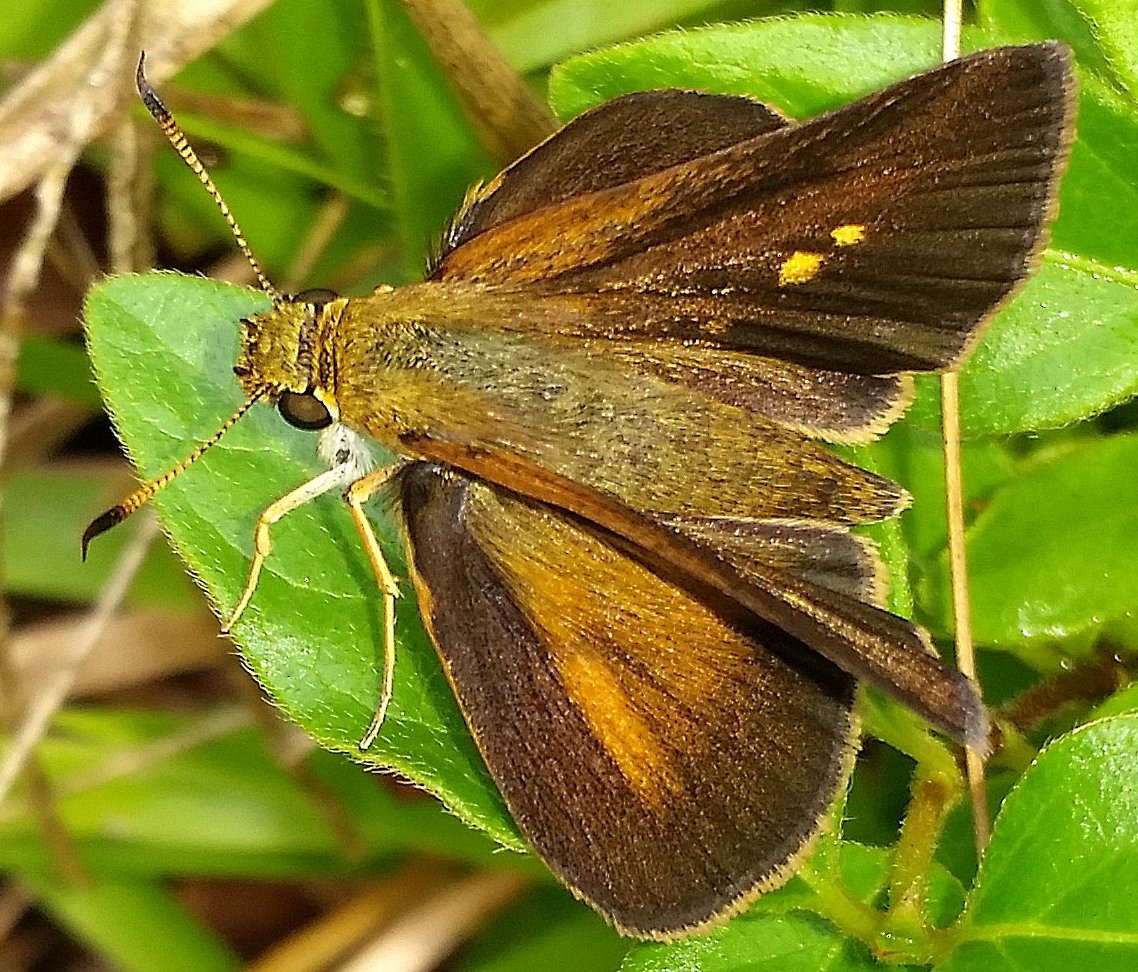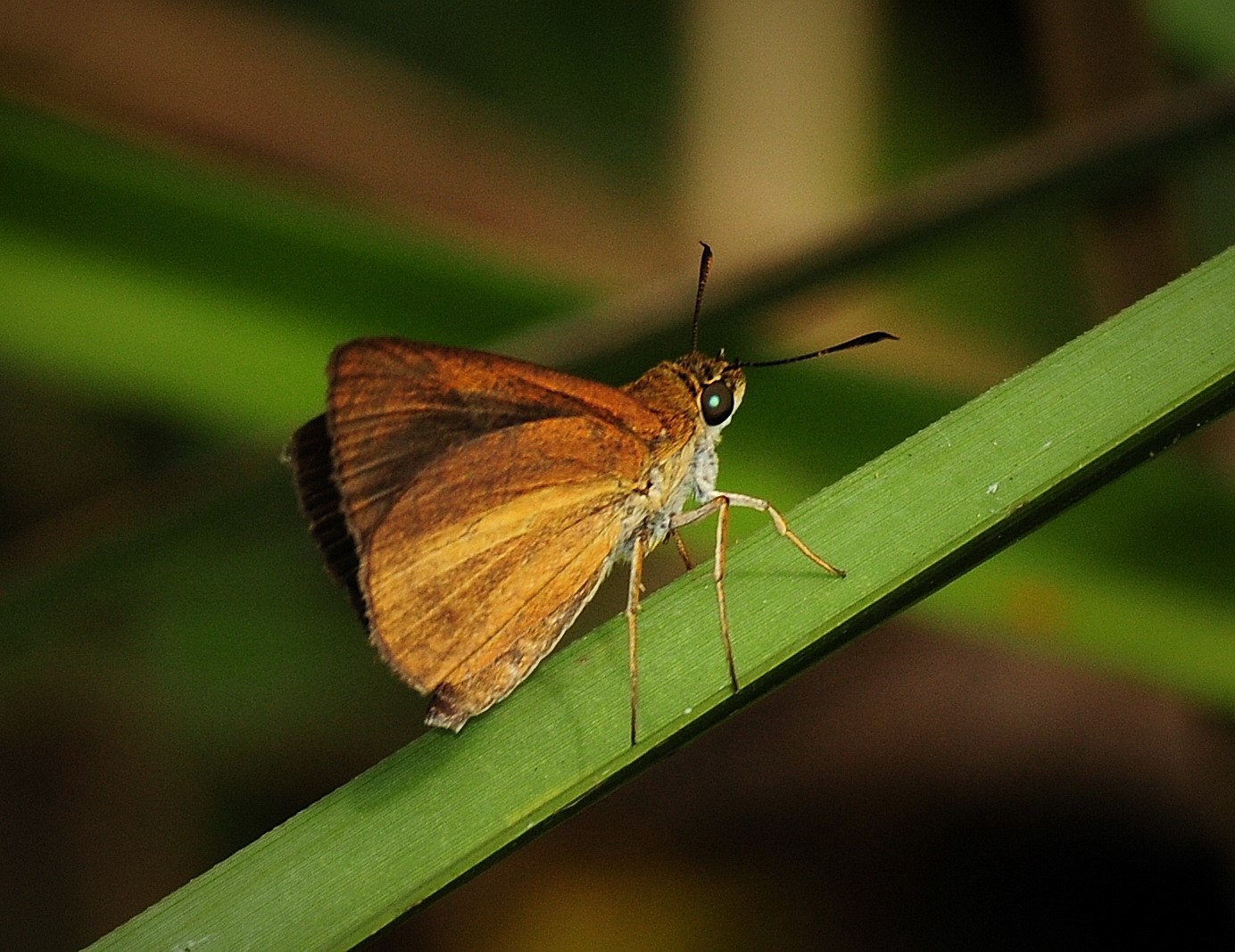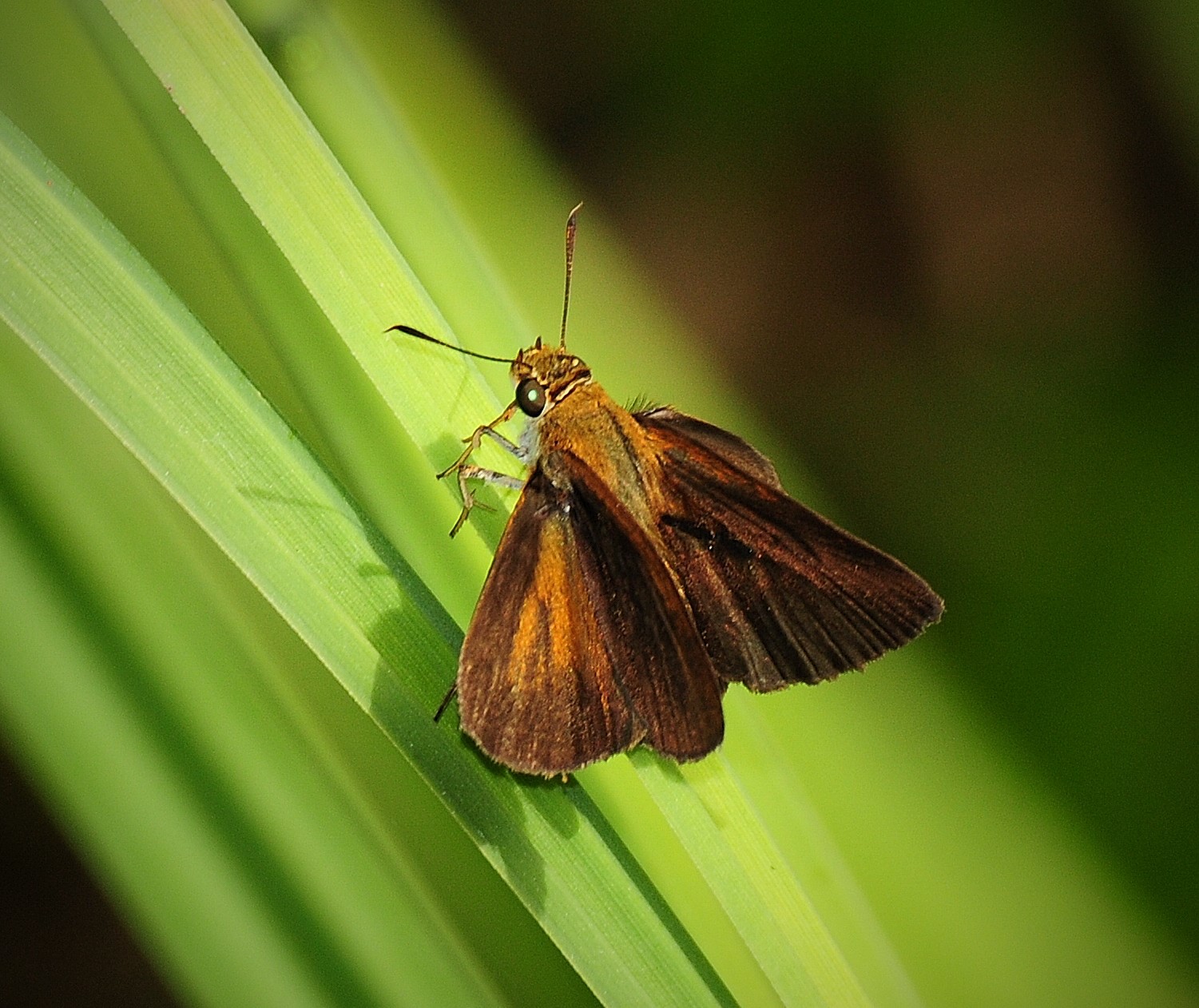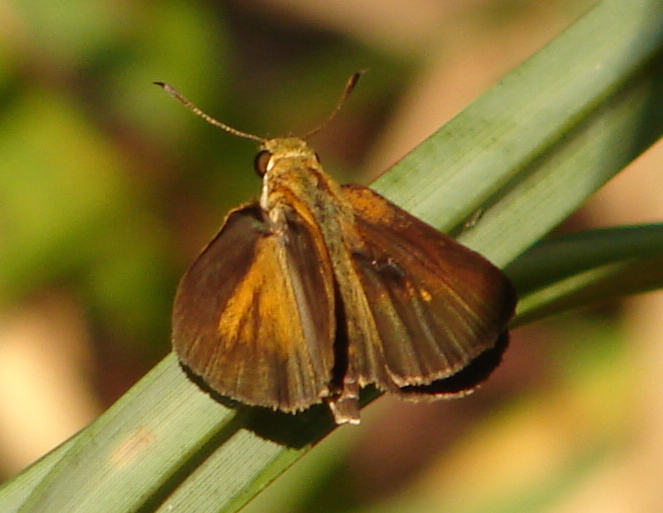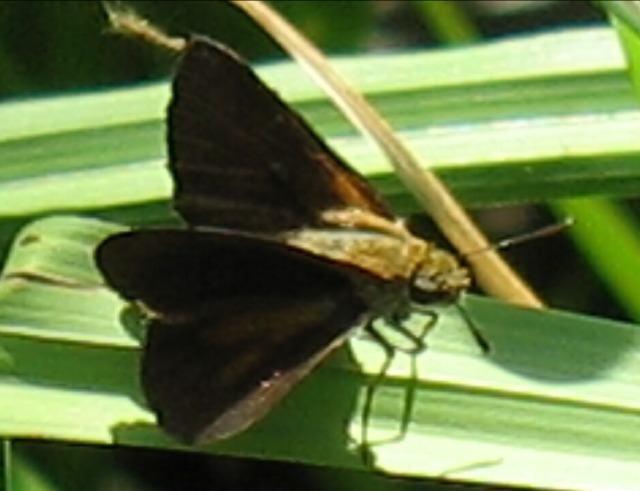| Aaron's Skipper - 43 |
| American Copper - 368 |
| American Lady - 6,963 |
| American Snout - 2,613 |
| Aphrodite Fritillary - 534 |
| Appalachian Azure - 158 |
| Appalachian Brown - 872 |
| Appalachian Tiger Swallowtail - 210 |
| Arogos Skipper - 22 |
| Baltimore Checkerspot - 62 |
| Banded Hairstreak - 553 |
| Barred Yellow - 19 |
| Berry's Skipper - 46 |
| Black Swallowtail - 3,056 |
| Brazilian Skipper - 218 |
| Broad-winged Skipper - 297 |
| Brown Elfin - 413 |
| Byssus Skipper - 246 |
| Cabbage White - 6,004 |
| Carolina Roadside-Skipper - 295 |
| Carolina Satyr - 5,110 |
| Cassius Blue - 3 |
| Ceraunus Blue - 3 |
| Checkered White - 331 |
| Clouded Skipper - 4,849 |
| Clouded Sulphur - 1,931 |
| Cloudless Sulphur - 7,766 |
| Cobweb Skipper - 108 |
| Cofaqui Giant-Skipper - 4 |
| Common Buckeye - 9,408 |
| Common Checkered-Skipper - 2,949 |
| Common Roadside-Skipper - 397 |
| Common Sootywing - 874 |
| Common Wood-Nymph - 1,756 |
| Compton Tortoiseshell - 3 |
| Confused Cloudywing - 221 |
| Coral Hairstreak - 321 |
| Creole Pearly-eye - 520 |
| Crossline Skipper - 1,739 |
| Crystal Skipper - 190 |
| Dainty Sulphur - 48 |
| Delaware Skipper - 811 |
| Diana Fritillary - 486 |
| Dion Skipper - 586 |
| Dorantes Longtail - 10 |
| Dotted Skipper - 135 |
| Dreamy Duskywing - 610 |
| Dukes' Skipper - 88 |
| Dun Skipper - 2,176 |
| Dusky Azure - 47 |
| Dusky Roadside-Skipper - 51 |
| Dusted Skipper - 299 |
| Early Hairstreak - 59 |
| Eastern Comma - 2,475 |
| Eastern Giant Swallowtail - 347 |
| Eastern Pine Elfin - 327 |
| Eastern Pygmy-Blue - 1 |
| Eastern Tailed-Blue - 8,568 |
| Eastern Tiger Swallowtail - 11,925 |
| Edwards' Hairstreak - 103 |
| Eufala Skipper - 734 |
| European Skipper - 17 |
| Falcate Orangetip - 1,971 |
| Fiery Skipper - 6,445 |
| Frosted Elfin - 94 |
| Funereal Duskywing - 4 |
| Gemmed Satyr - 1,679 |
| Georgia Satyr - 230 |
| Goatweed Leafwing - 3 |
| Golden Banded-Skipper - 101 |
| Gorgone Checkerspot - 9 |
| Gray Comma - 14 |
| Gray Hairstreak - 4,066 |
| Great Purple Hairstreak - 581 |
| Great Southern White - 6 |
| Great Spangled Fritillary - 2,546 |
| Green Comma - 96 |
| Grizzled Skipper - 16 |
| Gulf Fritillary - 1,939 |
| Hackberry Emperor - 1,664 |
| Harvester - 635 |
| Hayhurst's Scallopwing - 358 |
| Henry's Elfin - 616 |
| Hessel's Hairstreak - 135 |
| Hickory Hairstreak - 18 |
| Hoary Edge - 1,357 |
| Hobomok Skipper - 255 |
| Holly Azure - 381 |
| Horace's Duskywing - 3,477 |
| Incognito Crescent - 90 |
| Indian Skipper - 76 |
| Intricate Satyr - 45 |
| Juniper Hairstreak - 819 |
| Juvenal's Duskywing - 2,845 |
| King's Hairstreak - 175 |
| Lace-winged Roadside-Skipper - 654 |
| Large Orange Sulphur - 2 |
| Least Skipper - 2,960 |
| Leonard's Skipper - 87 |
| Little Glassywing - 1,713 |
| Little Metalmark - 175 |
| Little Wood-Satyr - 1,368 |
| Little Yellow - 1,690 |
| Loammi Skipper - 6 |
| Long Dash - 13 |
| Long-tailed Skipper - 1,501 |
| Meadow Fritillary - 771 |
| Meske's Skipper - 146 |
| Milbert's Tortoiseshell - 1 |
| Mimic - 6 |
| Mitchell's Satyr - 32 |
| Monarch - 5,717 |
| Mottled Duskywing - 115 |
| Mourning Cloak - 1,786 |
| Northern Broken-dash - 495 |
| Northern Cloudywing - 1,071 |
| Northern Pearly-eye - 1,198 |
| Oak Hairstreak - 126 |
| Ocola Skipper - 3,290 |
| Olympia Marble - 68 |
| Orange Sulphur - 4,812 |
| Orange-barred Sulphur - 2 |
| Painted Lady - 1,719 |
| Palamedes Swallowtail - 2,468 |
| Palatka Skipper - 132 |
| Pearl Crescent - 9,916 |
| Peck's Skipper - 467 |
| Pepper and Salt Skipper - 215 |
| Phaon Crescent - 202 |
| Pipevine Swallowtail - 2,863 |
| Queen - 222 |
| Question Mark - 3,758 |
| Rare Skipper - 30 |
| Red Admiral - 4,372 |
| Red-banded Hairstreak - 3,695 |
| Red-spotted Purple - 5,353 |
| Regal Fritillary - 6 |
| Reversed Roadside-Skipper - 147 |
| Sachem - 5,146 |
| Salt Marsh Skipper - 395 |
| Silver-spotted Skipper - 9,065 |
| Silvery Blue - 153 |
| Silvery Checkerspot - 1,368 |
| Sleepy Duskywing - 698 |
| Sleepy Orange - 7,404 |
| Soldier - 2 |
| Southern Broken-dash - 1,139 |
| Southern Cloudywing - 1,543 |
| Southern Dogface - 25 |
| Southern Pearly-eye - 962 |
| Southern Skipperling - 650 |
| Spicebush Swallowtail - 5,655 |
| Spring Azure - 1,273 |
| Striped Hairstreak - 156 |
| Summer Azure - 5,418 |
| Swarthy Skipper - 1,217 |
| Tawny Crescent - 75 |
| Tawny Emperor - 754 |
| Tawny-edged Skipper - 690 |
| Texan Crescent - 3 |
| Tropical Checkered-Skipper - 31 |
| Twin-spot Skipper - 187 |
| Two-spotted Skipper - 47 |
| Variegated Fritillary - 5,375 |
| Viceroy - 2,073 |
| West Virginia White - 376 |
| Whirlabout - 1,108 |
| White Checkered-Skipper - 12 |
| White Peacock - 24 |
| White-M Hairstreak - 536 |
| Wild Indigo Duskywing - 685 |
| Yehl Skipper - 404 |
| Yucca Giant-Skipper - 168 |
| Zabulon Skipper - 3,060 |
| Zarucco Duskywing - 781 |
| Zebra Longwing - 125 |
| Zebra Swallowtail - 2,330 |

 >>
>>